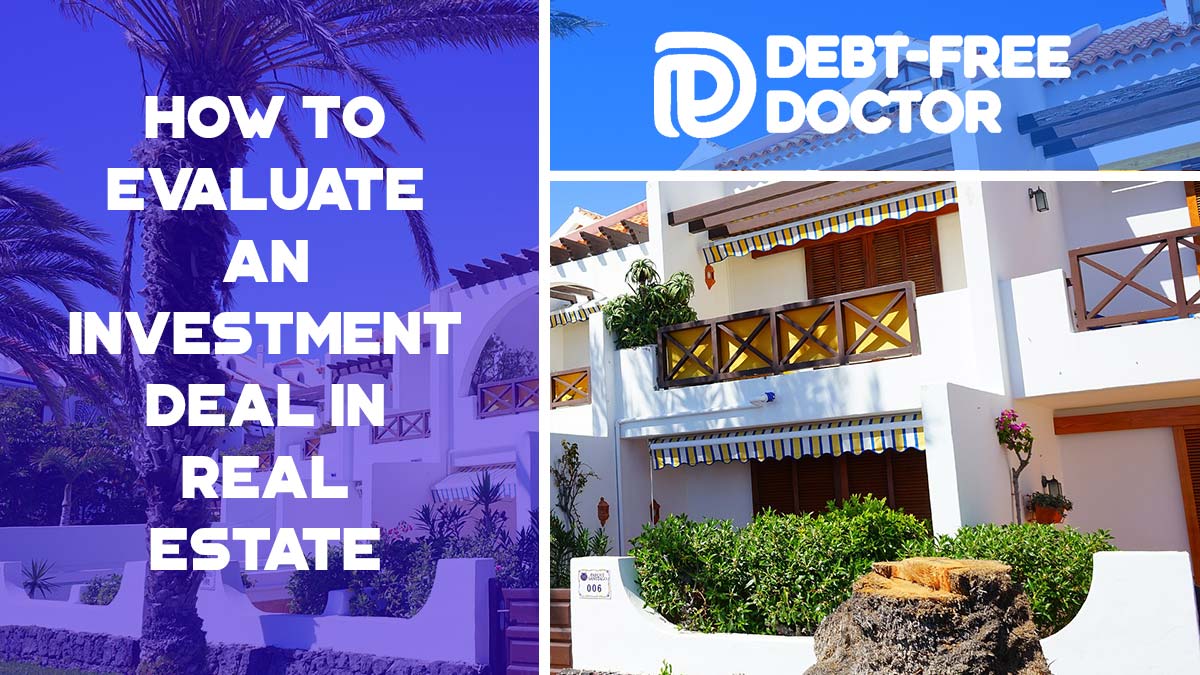So you’ve decided that you want to get into passive real estate investing. Good for you. One of the reasons new Passive Investors Circle members choose to go this route is that they realize that investing the “traditional” way for 35+ years in a 401k doesn’t give them many options.
Investing for cash flow NOW to replace monthly expenses is the key to achieving financial independence within 7-10 years.
When I started investing in real estate (crowdfunding) years ago, frankly I was clueless.
Here’s the process I used in the past on how to evaluate an investment opportunity:
- Search online at the so-called “trusted” real estate websites (previously was Realty Shares)
- Find opportunities available with a minimum amount to invest that I could afford
- Immediately check the returns (even though I didn’t know what they meant or how to calculate them)
- Browse the pictures and make sure the properties looked good
That’s it. I never knew that the deal’s sponsor was the MOST important part in the process but I learn from my mistakes, especially my $50,000 one!! 🙁
Back then, there wasn’t much competition online but things have changed tremendously. It seems that everyone wants a piece of the real estate pie. If you don’t believe me, try signing up with a few companies/sponsors and you’ll be bombarded with deals on a regular basis.
Between all of our electronic devices/social media accounts, we’re already in “information overload” mode. So with all of this information to sort through, it can become VERY frustrating trying to decide on which investment opportunity is the right one.
Have no fear, BIG Jeff is here. 🙂
Today we’re going to show you how to decide if a deal is right for you or not in less than 7 minutes.
Don’t Miss Any Updates. Each week I’ll send you advice on how to reach financial independence with passive income from real estate.
Sign up for my newsletterThe First Step

Again, I can’t stress enough about how important this is.
As a side note: Members of our Passive Investors Circle group receive all of the deals that we invest in throughout the year so I do all of the due diligence for you.
Depending on the email, most give you a list of some of the key data points needed to determine if the deal is right for you such as:
- Type of asset
- Market property is located
- Hold time
- Minimum amount to invest
- Funding deadline
You should be able to quickly figure out whether or not the property meets your investing goals and if you’re actually able to invest in the deal.
For example, an email offering a deal in the South may give these data points:
- Type of asset: B-class multifamily
- Market property is located: Fort Worth, TX
- Hold time: 5 years
- Minimum investment to invest: $50,000
- Funding deadline: One month
After reviewing the deal’s highlights, you may or may not choose to continue learning about it. For instance, the asset class and market maybe what you’re looking for but you wanted something with a longer hold time.
If the investment opportunity isn’t right then move on and don’t waste any more of your time. If it doesn’t align with your investing goals then don’t worry as more deals will likely be opening up soon.
But if the deal does appear to meet your criteria after your initial review then let’s go a bit deeper….
Join the Passive Investors CircleEvaluating The Numbers
The majority of the emails that offer investment opportunities will give you a high-level view of the returns you can expect from investing in the deal.
For example, you might see something like this:
- 7% preferred return
- 8% average cash-on-cash return
- 16.5% IRR
- 20% average annual return including sale
- 2.0x equity multiple
- $50,000 minimum investment
- 5-year hold time
Some of you maybe familiar with what each of those percentages mean and others may not. No worries.
The more you educate yourself by using this blog and others, the quicker you’ll be able to evaluate deals on the fly.
I realize for those that are new to the real estate investing game, these numbers can be both confusing and intimidating.
Let’s go over them so then you’ll have more confidence in how to evaluate an investment.
Preferred Return & Cash-on-Cash Return
Preferred Return
Let’s start with the preferred return in real estate.
At a basic level, a preferred return refers to the ordering in which profits from a real estate project are distributed to investors.
It’s a threshold return that limited partners/LPs/passive investors are offered prior to the general partners (GPs) receiving payment.
It refers to the order in which profits from a project are distributed to investors.
In our example above there’s a 7% preferred return. This means that for the first 7% of the returns, those go 100% to you, the limited partner.
The sponsors don’t get any of that first 7%.
If you were to invest $100,000 in this particular deal then:
- You could expect to receive $7,000/year in distributions
- Quarterly distributions: $7,000/4 = $1,750
One of the questions frequently asked about the preferred return (pref) is, “How does the general partner set the pref percentage?”
They do this based on three things:
- the business plan
- goals of their limited partners
- what other general partners who are implementing similar business plans are offering
When underwriting (evaluating) a deal, the average annualized cash flow should exceed the preferred return amount offered to investors so that the general partners can distribute the preferred return.
Cash-on-Cash Return
Due to the fact that the average cash-on-cash return is 8% (which is higher than the 7% preferred return), that means that this deal is projected to pay out above that 7% during part of the hold time.
Here’s how to calculate the cash on cash return:
- Cash on cash return = net operating income (NOI)/total cash investment
- NOI = annual rental income – the operating expenses
For now, you’ve got a basic benchmark of $1,750 in quarterly cash flow based on that 7% preferred return.
Equity Multiple
The equity multiple calculation is also very important to know as it tells you how much your investment will grow during the lifecycle of the project.
In our example, if you decided to invest $100,000 and the equity multiple was 2x, then you’d end up with double your original investment or $200,000.
Try to get that type of return in the market!
Average Annual Return & IRR
Average Annual Return
In our example, the hold time is over a five year period so the average annual return is what you can expect during that time frame.
With a $100,000 investment that doubles to $200,000 in 5 years, the total returns would be 100% of your original investment.
Given that, your average annual return would be 20% (100% or your original investment / 5 years).
Internal Rate of Return
The Internal Rate of Return (IRR) is a metric that allows investors to learn the average annual return they can expect to realize from a real estate investment over time, expressed as a percentage.
In other words, it takes the average annual return and adjusts for the time delay. In our example, because there’s a hold period of 5 years, you’re not getting all of your returns at once.
This time delay has a cost that comes with it, since you’re not able to earn interest on those returns or invest them elsewhere. The IRR takes that time delay into account.
Personally, I like to invest in property with an average annual return of 16-20% and an IRR of at least 14%.
Should You Keep Going?
After this initial review of the numbers, it’s now time to make a decision of whether to keep going and learning more or not.
This doesn’t mean you have to send in your check yet. You’re telling yourself that you are making the decision to continuing the process of researching and vetting this opportunity to see if it’s something you want to invest in for the next 5 years.
At this point it’s time to make what’s called a Soft Reserve which basically means you’re holding your position in the line to invest.
Next, you’ll want to review all of the information the sponsor has about the property such as the full investment summary. After reviewing this information you can either move forward with a Hard Reserve (you’re all in) or you can back out if need be.
Conclusion
Receiving an email with a deal, especially if you’ve been waiting for months for an opportunity, can be very exciting.
Maybe you’ve had your funds ready to deploy and you’re ready to pull the trigger on the next deal. Or perhaps you’re scrambling to roll over your 401(k) into a self-directed IRA and aren’t sure whether the funds will be ready in time.
Whatever your situation, it’s important to know exactly what you’re looking for going in so you can make a quick decision without wasting time.
If the deal meets your criteria and investing goals then you’re all set.
Remember, knowing what you’re looking for will help you navigate these deal emails and find the best investment for you.
Are you ready for deal flow to hit your inbox?
Join the Passive Investors Circle to get going.
Join the Passive Investors Circle



